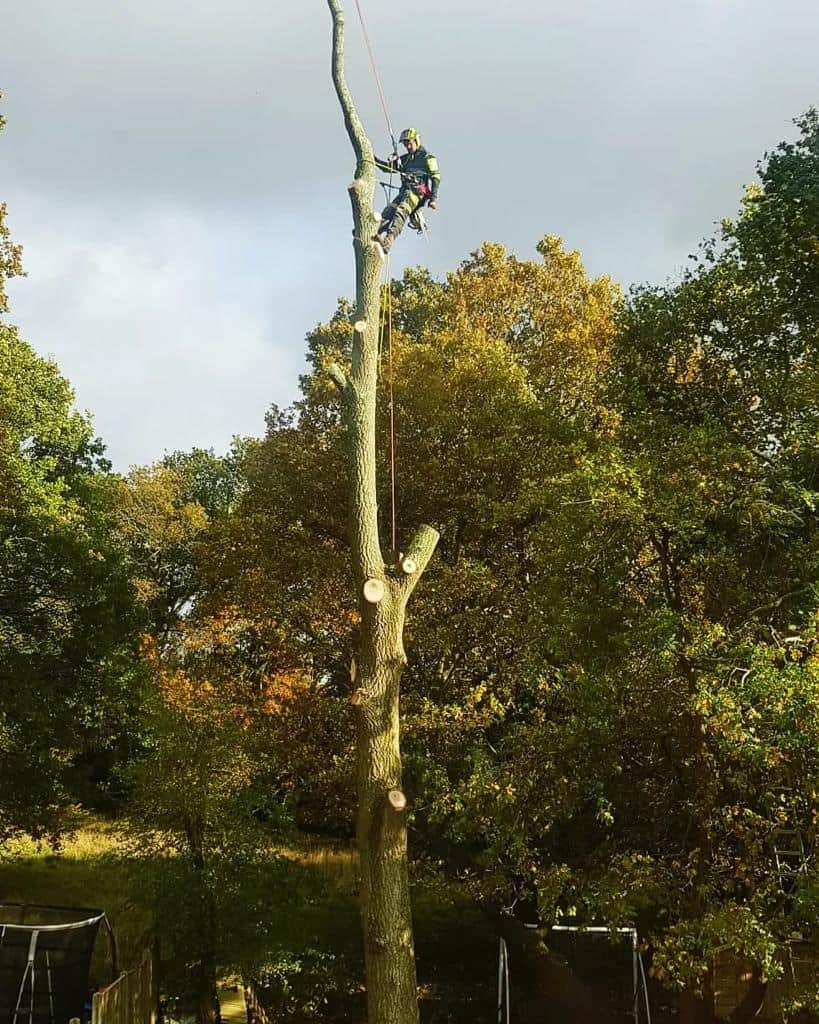Crown reduction is one of the most effective tree surgery techniques for managing tree size, shape, and overall health. It involves carefully removing selected branches from the crown — the upper canopy — to reduce its overall height or spread. This process improves safety, encourages balanced growth, and helps maintain a tree’s structural integrity. However, the work doesn’t end once the pruning is complete. Proper aftercare and monitoring are essential to ensure the tree recovers fully and continues to thrive. At EM Tree Surgery Dursley, we help homeowners and landowners in Dursley, Gloucestershire understand what to look out for after crown reduction and how to support their trees through recovery.
Understanding the Recovery Process
When a tree undergoes crown reduction, it experiences stress as a result of losing part of its canopy. While this is a natural response, it’s important to give the tree time to adjust and redirect its energy towards new growth. In the months following the work, the tree will begin to heal pruning wounds, rebalance nutrient distribution, and produce new shoots to restore its canopy.
Monitoring this recovery process allows early detection of any potential issues — such as disease, poor regrowth, or pest activity — before they become serious problems.
Key Areas to Monitor After Crown Reduction
1. Wound Healing and Regrowth
Check pruning sites regularly for signs of proper healing. Healthy pruning cuts should begin to seal naturally with callus tissue around the edges within a few months.
- What to look for: Smooth, even regrowth and the absence of cracks or decay at the cut points.
- Warning signs: Sunken or discoloured areas, fungal growth, or sap leakage — these may indicate infection or decay.
Light, steady regrowth along the branches shows that the tree is redistributing nutrients effectively and maintaining balance within its canopy.
2. New Shoot Development
After crown reduction, the tree will often produce new shoots around the pruned areas. While some regrowth is healthy, excessive or poorly directed shoots may lead to future structural problems if not managed correctly.
- Healthy regrowth: Evenly spaced shoots that follow the tree’s natural shape.
- Problematic growth: Dense clusters of shoots or those growing inwards or crossing other branches.
If rapid or uneven regrowth occurs, a follow-up maintenance prune from professionals like EM Tree Surgery Dursley can help maintain structure and prevent weak attachments.
3. Signs of Stress
A tree under stress may show visible changes in its leaves, bark, or canopy. These signs are often temporary if caught early, but prolonged stress can make the tree more vulnerable to disease.
- Possible indicators:
- Yellowing or premature leaf drop
- Thinning foliage
- Dry or cracking bark
- Reduced growth in new shoots
- Yellowing or premature leaf drop
Environmental factors such as drought or poor soil quality can compound this stress, so it’s vital to monitor the overall condition of the tree, especially during hot or dry periods.
4. Pest and Disease Activity
Fresh pruning wounds can attract insects or pathogens. Keeping an eye out for pest infestations or fungal infections is crucial in the months following the procedure.
- Common pests: Aphids, bark beetles, or caterpillars that target weakened trees.
- Fungal signs: Discoloured patches, soft bark, or visible fruiting bodies near cuts.
If any of these are detected, contacting an experienced tree surgeon such as EM Tree Surgery Dursley ensures that prompt, targeted treatment prevents further damage.
5. Structural Stability
Crown reduction lightens the canopy and reduces wind resistance, improving safety in the long term. However, it’s still important to assess the tree’s overall structure during recovery, particularly after strong winds or heavy rain.
- Monitor: The angle of major limbs, trunk stability, and root plate condition.
- Look out for: Cracks, lifting soil around the base, or leaning that wasn’t present before.
Ongoing monitoring helps ensure the tree remains stable and structurally sound as it adapts to its new canopy weight.
Supporting Tree Health After Crown Reduction
1. Adequate Watering and Mulching
Proper hydration supports the healing process and encourages new root and shoot growth. Applying a mulch layer around the base of the tree helps retain moisture and regulate soil temperature.
- Best practice: Keep mulch a few inches away from the trunk to prevent rot.
- During dry spells: Water slowly and deeply to reach the roots rather than frequent shallow watering.
2. Soil and Nutrient Management
Healthy soil promotes strong regrowth. Nutrient-rich soil supports leaf recovery and overall resilience. Avoid compacting the soil around the tree base, and consider periodic soil conditioning if the tree shows signs of nutrient deficiency.
3. Controlled Pruning of New Growth
As new shoots appear, selective trimming helps shape the canopy and prevent overcrowding. Controlled pruning should always be carried out by trained professionals to avoid unnecessary stress or imbalance.
At EM Tree Surgery Dursley, we recommend scheduling a follow-up assessment several months after crown reduction to determine whether corrective pruning or further maintenance is required.
4. Observation Over the Seasons
Trees respond to crown reduction differently depending on species and environment. Monitoring over the course of a full growing season gives a clear picture of how well the tree has recovered.
- Spring: Look for healthy leaf buds and balanced shoot growth.
- Summer: Monitor foliage density and colour.
- Autumn: Check for uniform leaf fall and inspect for signs of fungal growth as the weather cools.
This ongoing observation ensures that any potential issues are caught early and addressed before they affect long-term health.
Long-Term Benefits of Proper Aftercare
With appropriate post-reduction care, trees can recover quickly and maintain a healthy, well-balanced canopy. The benefits of diligent monitoring include:
- Improved structural stability and reduced storm risk
- Healthier regrowth and leaf development
- Long-term disease resistance
- Enhanced aesthetic shape and proportion
Neglecting aftercare, on the other hand, can lead to decay, unbalanced regrowth, or long-term decline — issues that could have been avoided with early intervention.
Why Professional Monitoring Matters
Professional tree surgeons bring trained observation and experience to post-surgery care. Subtle signs of stress or disease are often overlooked by the untrained eye, but early professional attention can prevent costly damage later on. At EM Tree Surgery Dursley, we provide ongoing maintenance and inspections across Dursley and Gloucestershire to ensure every tree remains healthy, stable, and well-shaped long after crown reduction work.
Conclusion
Crown reduction is an excellent way to improve safety, structure, and vitality, but aftercare plays a crucial role in ensuring the tree’s long-term success. Monitoring regrowth, stability, and signs of stress allows early detection of potential problems, keeping the tree healthy and attractive for years to come. For expert post-reduction care and professional tree maintenance in Dursley, EM Tree Surgery Dursley provides reliable guidance and support to help your trees recover, flourish, and continue enhancing your landscape.
Call us on: 01453 708 172
Click here to find out more about EM Tree Surgery Dursley
Click here to complete our contact form and see how we can help with your tree needs.

